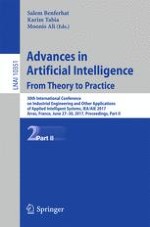The two-volume set LNCS 10350 and 10351 constitutes the thoroughly refereed proceedings of the 30th International Conference on Industrial, Engineering and Other Applications of Applied Intelligent Systems, IEA/AIE 2017, held in Arras, France, in June 2017.
The 70 revised full papers presented together with 45 short papers and 3 invited talks were carefully reviewed and selected from 180 submissions. They are organized in topical sections: constraints, planning, and optimization; data mining and machine learning; sensors, signal processing, and data fusion; recommender systems; decision support systems; knowledge representation and reasoning; navigation, control, and autonome agents; sentiment analysis and social media; games, computer vision; and animation; uncertainty management; graphical models: from theory to applications; anomaly detection; agronomy and artificial intelligence; applications of argumentation; intelligent systems in healthcare and mhealth for health outcomes; and innovative applications of textual analysis based on AI.
